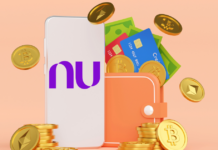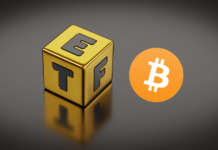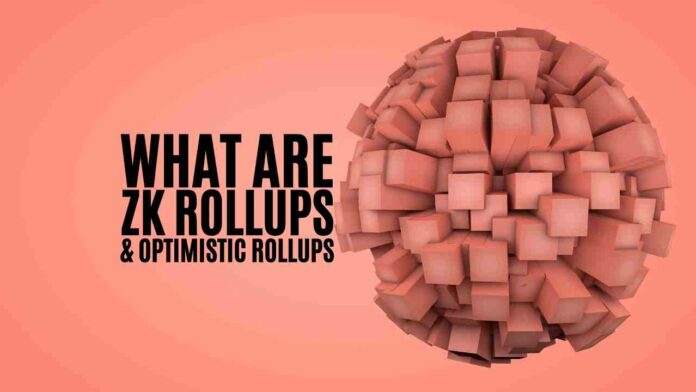The launch of Ethereum was doubtlessly a game-changer for the crypto industry. Ethereum unlocked new cryptocurrency possibilities and has been a driving force behind recent blockchain trends such as DeFi and NFTs.
However, Ethereum’s rise also raised concerns about how to improve scalability. Developers are often searching for ways to improve the network’s load. Interestingly, past attempts saw relative levels of success. But, rollups such as ZK-rollups and Optimistic rollups have hit the market and are grabbing attention.
Rollups are a type of Layer 2 solution with incredible potential. They operate by processing transactions within smart chains. So, they move transaction computation off-chain but store transaction data on Ethereum.
ZK vs Optimistic Rollups? What's the difference? 🤔
Why Ethereum 2.0 Phase 1 is enough to scale Ethereum? #Ethereum @optimismPBC @loopringorg @deversifi @zksync pic.twitter.com/8zpkBbik0x— finematics.eth 🦇🔊 (@finematics) October 30, 2020
Smart contracts, whose main purpose is to bundle (or “roll up”) transaction data and send it off-chain for processing, enable all of this. Here’s how rollups work: Network participants, also known as sequencers or validators, handle transaction data and send batches of heavily compressed transaction data back to the main chain. Such batches include the basic information required to verify the validity of the transactions.
Explaining Rollups
In contrast to some existing Layer 2 solutions, rollups move computing off-chain while still submitting (very compressed) data to the Ethereum mainnet, allowing them to scale more effectively without occasionally affecting data availability. Off-chain data availability is another option offered by some rollups. This implies that no data is uploaded to Ethereum, resulting in large throughput increases but lower security.
The two types of rollups are:
- Zero-Knowledge (ZK)
- Optimistic
The verification process distinguishes ZK-rollups from Optimistic rollups. ZK rollups produce cryptographic proofs that can be used to confirm the authenticity of transactions. For each batch of transactions, validity proofs are created and relayed to the main chain for validation.
Shill me your optimistic vs zero knowledge rollup opinions, please.
Seems there is consensus that zk will be the future of L2s, but I've heard rumblings that optimistic rollups could potentially be better.
What are your current thoughts?
OP = Optimistic
ZK = Zero Knowledge— Patrick Collins 🌪 (@PatrickAlphaC) February 18, 2023
Optimistic rollups, on the other hand, make the assumption that all transactions are valid and send batches without doing any processing at all. This can result in huge scalability benefits. They do, however, provide a challenge period where anyone can contest the accuracy of the data in a batch. If someone discovers a scam transaction, the rollup conducts a fraud-proof and computes the proper transaction using the information on Layer 1.
Sequencers are expected to stake ETH to make sure they are motivated to process only valid transaction data. The system rewards sequencers that carry out their responsibilities with diligence. However, those who send fake transactions to the main Ethereum chain will have their stake reduced.
Definitely feel you on this one! I'm leaning towards ZK rollups, simply because of the added privacy and security they offer.
Plus, the recent progress and adoption we've seen with ZK rollups makes me feel like they're the way to go.
What are your thoughts?
— 0xsaurav.eth (@0xsauravchamoli) February 18, 2023
Platforms Using ZK or Optimistic Rollups
A number of projects are populating either ZK or Optimistic rollups.
Rollups with ZK
- Loopring: A Layer 2 protocol that enables non-custodial, gas-free decentralized trade.
- ZKSync: L2 scaling and privacy engine leveraging zero-knowledge proofing.
- Immutable X: non-custodial, scalable L2 protocol for NFTs.
Rollups that are Optimistic
- Optimism: Scalable, EVM-equivalent architecture-based, low-cost L2 expansion of the current Ethereum software.
- Boba Network: A Layer 2 scaling solution and hybrid computational platform that uses Optimistic rollups.
- Arbitrum Bridge: Ethereum Layer 2 scaling chain.
Optimistic Rollups vs. ZK-Rollups
The table below provides a comparison of both rollups.
|
Features |
Optimistic Rollup |
ZK-Rollup |
| Readiness for DeFi | It has similar execution models to EVM. | There are a few EVM-compatible ZK-rollups. ZK-rollups lack wide-range EVM support |
| Validity proof | For validity, fraud proofing is used. | It includes Zero-Knowledge proofs for embedded validity proofing. |
| Transaction finality | It has a one-week delay for transaction finality during the challenge periods. | It has no delays in transaction finality. This is due to the validity-proofing feature of ZK-rollups. |
| Trust | There is no need for a trusted setup. | A trusted setup is important. |
| Security | Users have incentives to ensure crypto-economy rollup security. | uses cryptographic proofs to guarantee security. |
Transaction Costs and Final Thoughts
Optimistic rollups represent an informed, positive perspective on the cost sector as you invest solely in the specific areas that are important for scalability. Since Optimistic rollups heavily rely on posting small volumes of data on Ethereum, the rollup pricing is much lower. Besides that, the EIP 4844 protocol support may make positive rollups more affordable for customers.
Really depends on your use case. OP's can technically be more efficient as you don't have to validate anything on-chain unless there's a dispute. With ZK's you need to check the proof. However ZK's allow you to settle faster bc you don't need the dispute window
— philogy (@real_philogy) February 18, 2023
ZK-rollups, on the other hand, come with enormous costs as a justification for computational proof. The cost covers the creation of the evidence for the various amounts of transaction blocks.
Optimistic Rollups vs ZK Rollups
Key Difference:
Optimistic = relies on fraud proofs
ZK = Relies on Zero Knowledge ProofsScalabilty
Optimistic = Linear
ZK = ExponentialImplementation
Optimistic = Easier to implement
ZK = Harder to implement but broader features pic.twitter.com/eTUbp6Errh— Crypto in Black (@thehiddenmaze) February 17, 2023
It’s also essential to remember that advanced hardware is required for producing zero-knowledge proofs. ZK-rollups are clearly more costly than Optimistic rollups due to the substantial costs associated with on-chain verifications.
In conclusion, ZK-rollups seem to be a more secure option when compared to Optimistic rollups. This is because it uses cryptographic proofs.
However, Optimistic rollups have a better appeal for EVM-compatible projects. However, both solutions are game changers in terms of scalability.
⬆️ For more cryptocurrency news, check out the Altcoin Buzz YouTube channel.
⬆️ Our popular Altcoin Buzz Access group generates tons of alpha for our subscribers. And for a limited time, it’s Free. Click the link and join the conversation today.



























